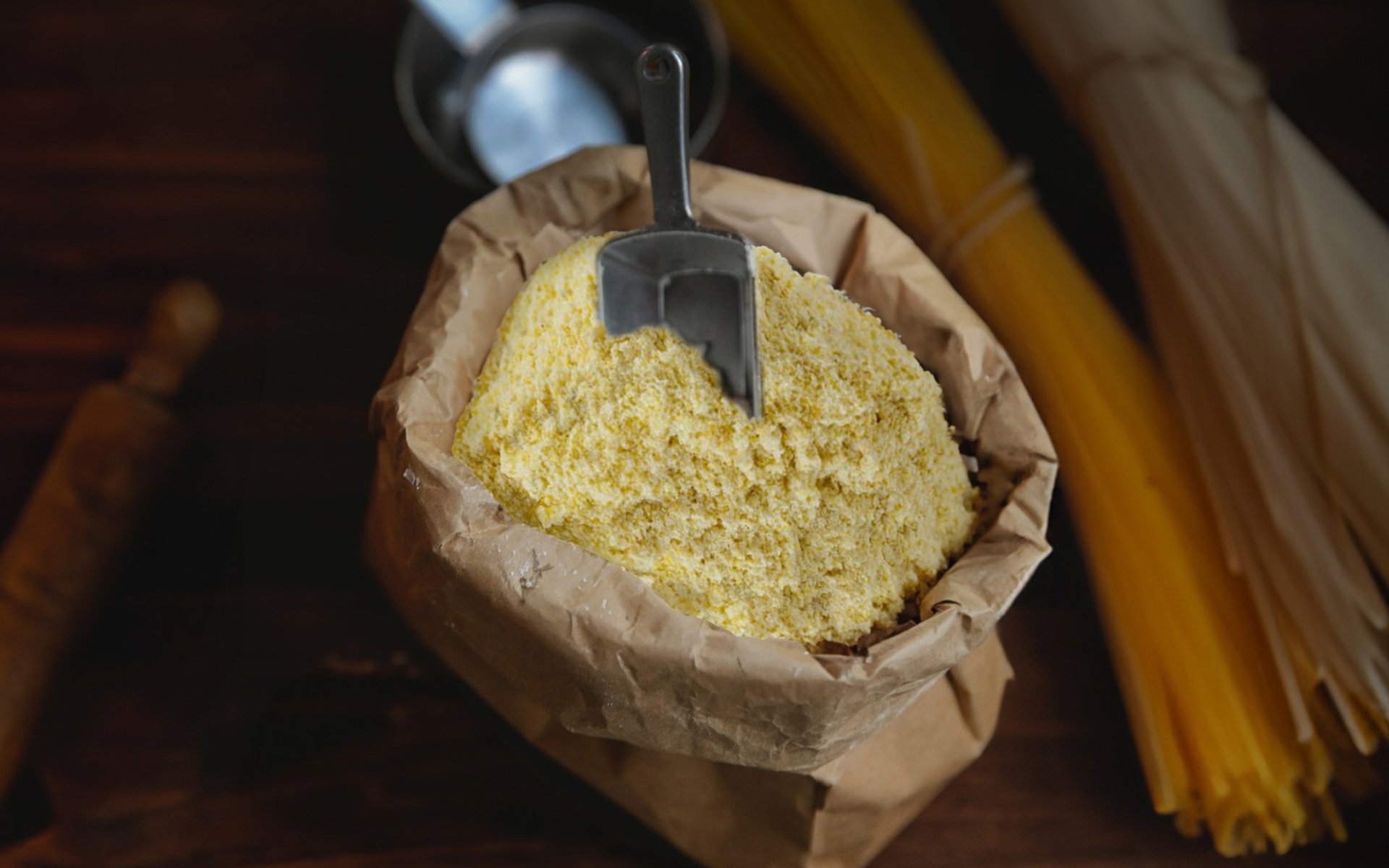Semolina

Semolina is a type of wheat flour produced by coarsely grinding durum wheat. This process results in a very high protein and gluten content. Generally, semolina is popular for making pasta, spaghetti, macaroni, as well as breakfast dishes like porridges and certain types of bread.
A Long History: From Ancient Egypt to Modern Day
The history of semolina flour dates back to ancient civilizations. The oldest evidence of semolina production dates back approximately 3,000 BCE, where it was used as a primary ingredient for making bread, porridges, and gruels in daily life. The ancient Egyptians were among the first to recognize the nutritional value of semolina. They ground durum wheat into a coarse texture to produce semolina flour for various baked goods and dishes. In that era, a confection made from semolina was known as "Ka'ak," a type of crispy baked good similar to modern biscuits.
Semolina with Pasta and Mediterranean Cuisine
Over time, semolina flour began to spread to various regions and quickly became a staple ingredient in Mediterranean and Middle Eastern cuisine. It played an especially crucial role in the development of pasta. Particularly, the Italian Renaissance marked a significant turning point in semolina's history. Italian pasta makers began experimenting with durum wheat semolina to develop pasta in a wider variety of shapes and sizes, such as Fettuccine and Pappardelle. Pasta made from semolina has a desirable chewy texture and holds its shape well.
Semolina's Global Journey to Various Regions
As trade routes expanded, the influence of semolina flour extended along these routes to different continents and cultures. In India, semolina is often referred to as Suji or Rava. It is commonly used as a key ingredient in popular Indian dishes such as Upma, a delicious breakfast staple, and Halwa, a delightful dessert similar to a pudding.
In a later era, semolina flour made its way across regions to the United States. In America, it is commonly used to make Semolina pudding, a dessert flavored with milk and served with various accompaniments such as sugar, cocoa powder, cinnamon, raisins, and fruits, creating a unique and flavorful sweet treat.
Semolina in Contemporary Cuisine and Nutritional Value
In contemporary cuisine, semolina continues to be a versatile flour, making it a popular choice for a wide range of savory and sweet dishes. Various cultures have their own unique traditions and recipes that feature semolina as an ingredient.
Semolina flour is highly regarded not only for its culinary versatility but also for its nutritional benefits. It is a good source of protein, fiber, as well as several essential vitamins and minerals like B vitamins, magnesium, and iron. The high protein content of semolina makes it a popular choice for those looking to increase their protein intake or for individuals seeking a healthy and energizing alternative flour.


